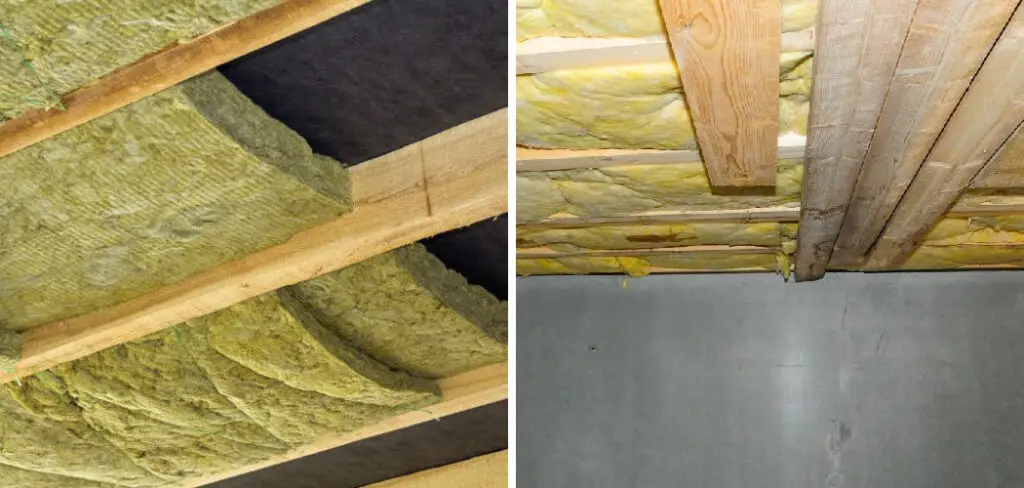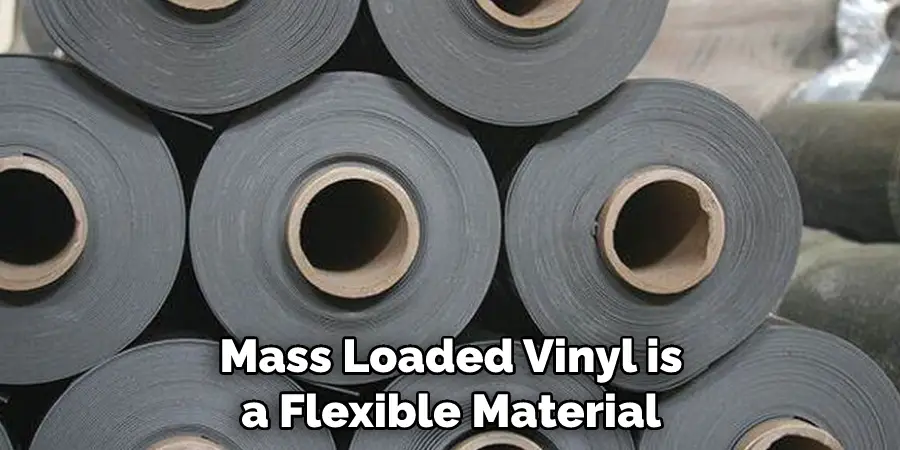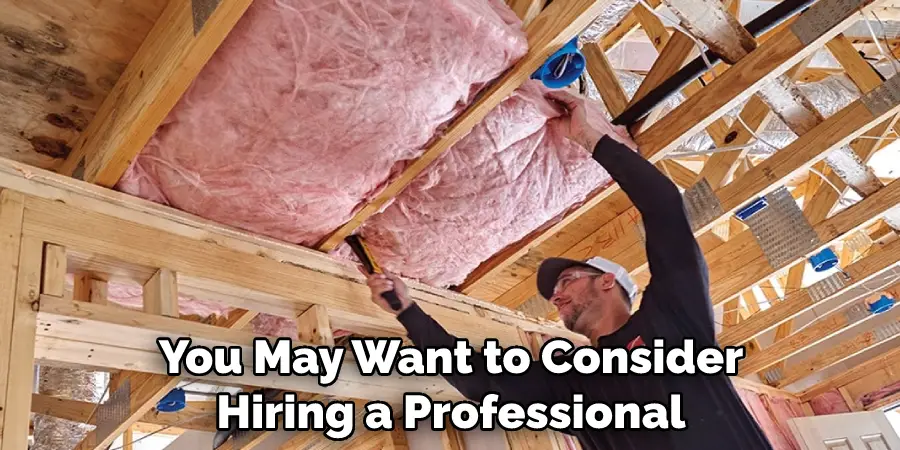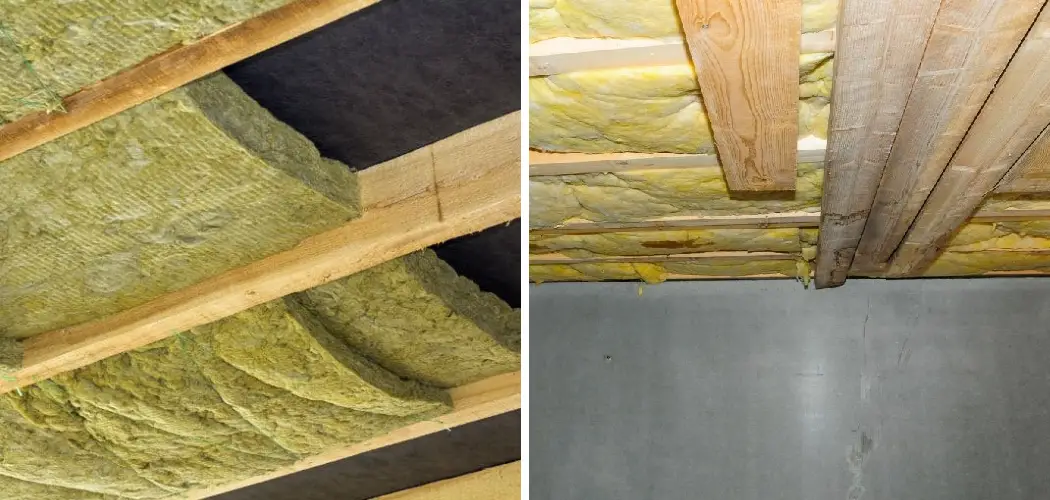Living in a two-story home can be great, but it also comes with some issues when sound travels too easily between the different levels. If you hear every step taken upstairs or loud voices right through your ceiling, then you might be wondering how to make sure the noise goes down and you can have peace.

Luckily, there are plenty of ways to decrease noise coming from an upstairs level into your basement by using various soundproof materials that may already exist in your space as well as special purchases such as acoustic insulation. In this blog post, we’ll go over simple steps on how to soundproof basement from upstairs, whatever noisy disturbances occur above.
Can You Soundproof Between Floors?
Yes, it is possible to soundproof between floors. The most effective way of doing so is by using a combination of materials and techniques, such as adding insulation, installing sound-absorbing panels on the walls, or laying down acoustic mats beneath carpets and rugs.
Insulation can help reduce the amount of noise that travels up from downstairs, while sound absorption panels absorb noise in the air. Acoustic mats are great for blocking out low-frequency sounds like footsteps, talking, and TV noises.
Additionally, you can make use of door seals and weatherstripping around windows to further reduce sound transmission. Depending on your budget and needs, different construction methods may be employed to ensure optimal results.
For example, building double walls with resilient channels can also greatly increase soundproofing capabilities. Ultimately, the more layers of soundproofing you have, the better your results will be. With a little bit of effort and the right materials, you can successfully soundproof between floors and create a space where both you and your neighbors can coexist peacefully.
What Materials Soundproof a Basement?
If you want to soundproof your basement from noise coming from upstairs, there are several materials that can help. The best soundproofing materials for basement walls and ceilings are:
1. Mass Loaded Vinyl (MLV):
MLV is a heavy rubber material that usually comes in sheets or rolls. It’s specifically designed to reduce sound transmission, and it can easily be hung on your walls or ceiling with wall anchors, screws, or construction adhesive.

2. Acoustic Foam Panels:
Acoustic foam panels are soft tiles made out of a sound-absorbing foam material. They come in different sizes and shapes, so you can customize them to fit your space perfectly. You can mount them directly onto the walls and ceiling using construction adhesive or velcro strips.
3. Vibration Isolation Pads:
Vibration isolation pads are designed to keep sound from vibrating through the walls and ceiling. They work by providing a cushion between the wall and the object that’s causing vibrations (such as an HVAC unit). To install them, you’ll need to measure the wall or ceiling area where you want to place them and cut them accordingly.
By using any of these materials, you can effectively soundproof your basement from noise coming from upstairs. Make sure to take into account any insulation requirements when choosing which material is right for your space. With the right materials, you can make sure that your basement will be quiet and peaceful!
10 Methods How to Soundproof Basement from Upstairs
1. Identify the Source of the Noise
The first step in soundproofing your basement from upstairs is to identify the source of the noise. Is its foot traffic, voices, or other sounds? This will help you determine the most effective soundproofing method. If it’s foot traffic, consider installing a rug or carpet in the basement. If it’s voices or other sounds, you may need to use acoustic insulation or other soundproofing materials.
2. Install Carpeting or Area Rugs
Carpeting or area rugs can help absorb sound and reduce noise transmission from upstairs. They can also add warmth and comfort to your basement. Carpeting can be installed on a concrete floor or over top of existing flooring, such as vinyl.
Area rugs are easier to install and can be moved around when needed. Make sure the carpets or rugs are thick enough to effectively absorb sound, otherwise, they won’t provide any benefit. When installing carpets, it is best to use a professional installer to get the job done properly.
3. Add Acoustic Insulation
Acoustic insulation can help block sound from traveling between floors. Install fiberglass batts or acoustic foam in the ceiling and walls of your basement to reduce noise transmission. These materials create an effective barrier that can prevent sound from passing through the walls and into your basement. If you’re unsure of what type of insulation to use, consult with a soundproofing specialist to determine the best material and installation methods for your project.

4. Seal Cracks and Gaps
Sealing cracks and gaps in the walls and ceiling of your basement can help reduce noise transmission. Use caulking or weatherstripping to seal any gaps around doors, windows, and baseboards.
Consider using acoustic caulk to reduce sound transmission through these openings. You may also want to use insulation or foam tape between the floor joists in order to block the sound coming through the ceiling. Additionally, if you have exposed pipes or ducts in your basement, use some form of noise insulation around them, such as foam board or fiberglass.
5. Use Soundproof Curtains
Soundproof curtains can absorb sound and reduce noise transmission. Install them on the walls or ceiling of your basement to help block noise from upstairs. Choose curtains that are thick and heavy for maximum soundproofing.
Also consider using blackout curtains which will also help block light from coming in through the windows. To maximize soundproofing, install the curtains on heavy-duty curtain rods and add a second layer of insulation, such as acoustical foam or fabric.
6. Install Soundproof Drywall
Soundproof drywall is specially designed to reduce noise transmission. It is thicker and denser than regular drywall, which makes it more effective at blocking sound. Install soundproof drywall on the walls and ceiling of your basement to reduce noise transmission from upstairs. This is a more expensive but effective solution for soundproofing.
Make sure that the drywall is properly sealed at all seams to ensure maximum noise reduction. You may also want to consider adding a layer of acoustic insulation behind the drywall to further reduce noise transmission. Finally, you should use green glue, a noise-proofing compound, between the layers of drywall for added sound dampening.
7. Use Mass-Loaded Vinyl
Mass-loaded vinyl is a heavy and flexible material that can be installed on the walls and ceiling of your basement to block sound. It is an effective soundproofing material that can help reduce noise transmission from upstairs.

It is also relatively inexpensive and easy to install. To install it, you can use adhesive or heavy-duty staples. Make sure to cover all gaps and seams between the sheets of mass-loaded vinyl to ensure maximum soundproofing.
8. Create a Soundproof Ceiling
Creating a soundproof ceiling in your basement can help reduce noise transmission from upstairs. Install acoustic tiles or soundproof drywall on the ceiling to absorb sound and reduce noise transmission.
You can also install a drop ceiling and use soundproofing material to prevent noise from reaching the floor above. Additionally, you can use acoustic insulation in the space between the floor joists to further absorb sound.
9. Build a False Ceiling
Building a false ceiling in your basement can help create a barrier between the upstairs living space and your basement. Use metal studs and soundproof drywall to build the false ceiling and install acoustic insulation to reduce noise transmission.
Make sure to seal any gaps or cracks in the ceiling with acoustic sealant. This will help prevent sound from traveling through the airways and into your basement. If done properly, a false ceiling can provide an additional layer of soundproofing and make your basement more comfortable to use.
10. Hire a Professional
If you are not comfortable with DIY projects or if the noise transmission from upstairs is too severe, you may want to consider hiring a professional. A professional contractor can assess your basement and provide advice on the most effective soundproofing method.
They can also install soundproof materials, such as Green Glue, MLV (mass-loaded vinyl), and acoustic panels. Professional contractors may be able to provide a more comprehensive and effective solution than DIY projects.

Before hiring a professional soundproofing contractor, research their past projects thoroughly and make sure they are experienced in this type of work. This is the most expensive option, but it may be worth considering if the noise transmission is too severe.
Conclusion
Soundproofing your basement can seem like an expensive and daunting task, but it is possible to do it on your own. By following the steps of how to soundproof basement from upstairs outlined in this article, you can effectively soundproof your basement from the noise coming from upstairs.
One of the most important elements of soundproofing is choosing a material that matches your budget and will offer the right insulation for your home. Once you’ve determined what type of soundproof material works for you, take the time to measure and cut out the exact area that needs insulation. Lastly, use high-quality adhesives to secure everything in place – don’t be tempted to skip this step!

